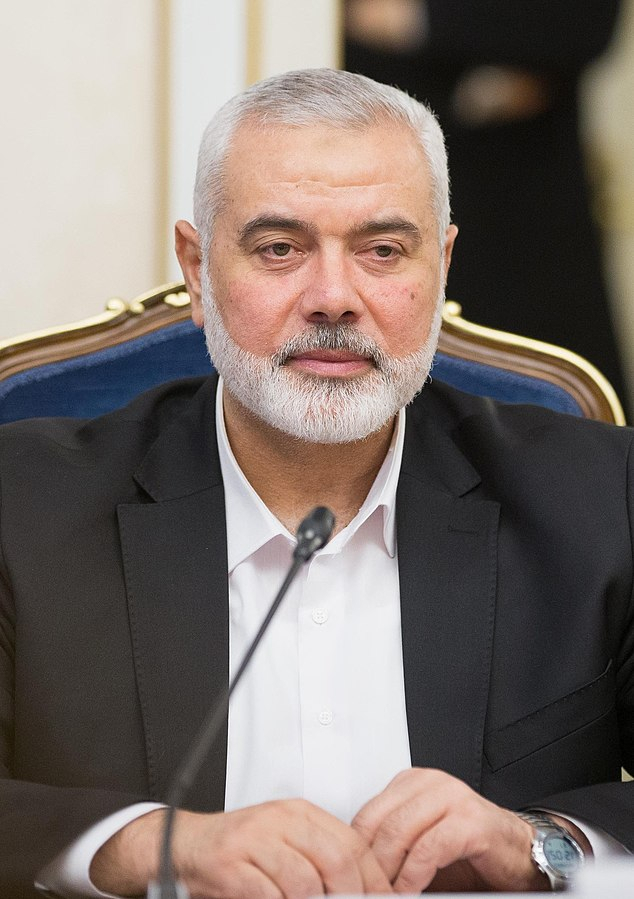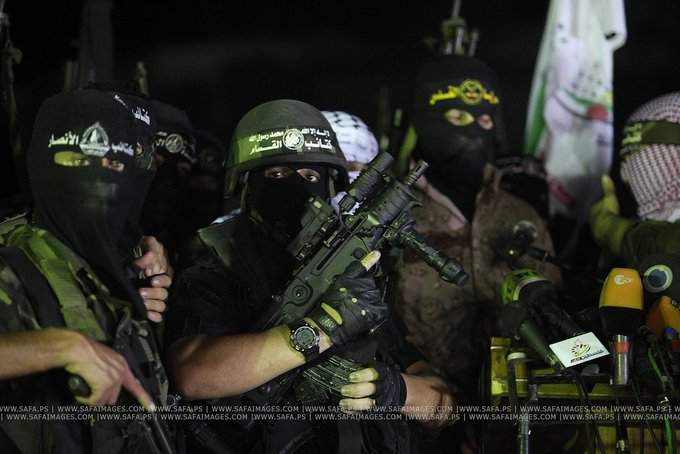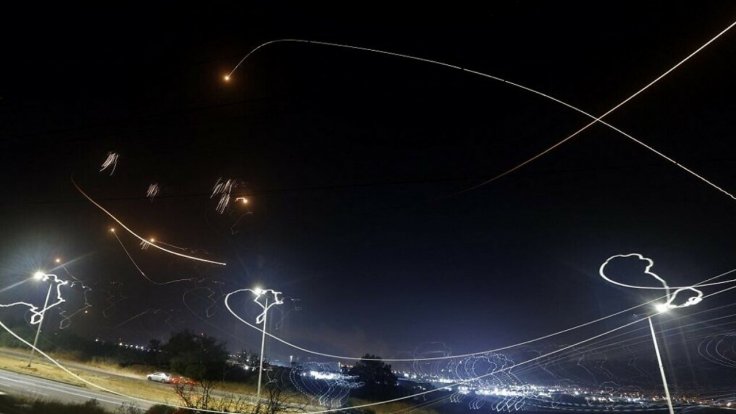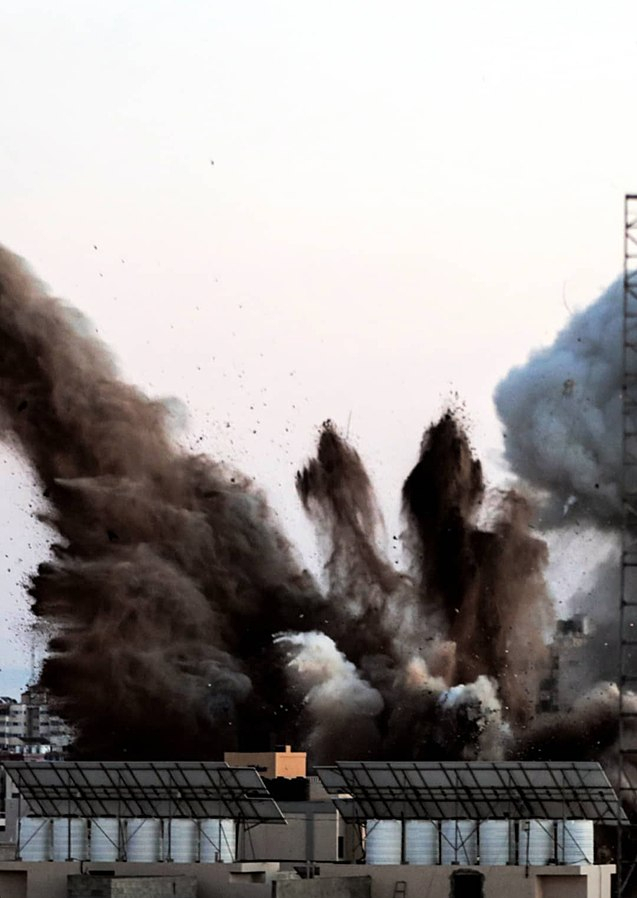The two-decade long tensions between Israel and Palestine spiraled out of control early last week, with the two foes showering a barrage of rockets at each other, resulting in loss of property and lives on either side. As the escalating violence ignites riots in mixed Jewish-Arab towns in Israel and spurs wide unrest in the West Bank, the world calls for peace but to almost no fruitful result.
At the center of the war is Hamas, the so-called militant group and rulers of the impoverished and blockaded Gaza Strip. The group crippled Israel's much-hyped Iron Dome Air Defense System last week when it fired over 480 rockets in less than two days. Needless to say, Hamas has been putting up a brave fight against one of the world's best militaries. But what makes Hamas so powerful that even Israel at times has had to struggle to counter their attacks?
What is Hamas?

Israel and a large section of the international media call it a terrorist group. Hamas has been the rulers of the disputed Gaza Strip and aims to become the de facto standard bearer of the Palestinian cause, capitalizing on the fading leadership of the Palestinian Authority, based in the West Bank.
The name 'Hamas' is an Arabic acronym for the Islamic Resistance Movement, originating as it did in 1987 after the beginning of the first Palestinian uprising against Israel's occupation of the West Bank and Gaza Strip. Moreover in Arabic Hamas means 'Zeal'. Under Hamas' charter, the group is committed to the destruction of Israel.
Hamas was founded in the 1980s. However, it was only in June 1989 that Sheikh Ahmed Ismail Hassan Yassin claimed that he was the 'Father' of the entire movement after he and his son were tortured by Israeli soldiers during an interrogation in prison, according to Inside Hamas: The Untold Story of the Militant Islamic Movement, written by Palestinian journalist Zaki Chehab.
How Was Hamas Formed?

Although Hamas was formed in the 1980s, the journey had begun in 1978. That year, after getting released from prison, Yassin established an organization with large number of followers, which came to be known as 'Islamic Compound'.
He also managed to win support and collaborated with Egypt's Muslim Brotherhood and other Islamist groups across Gaza, Hebron, Nablus and Jerusalem.
When Did Hamas Come to Prominence?

It wasn't till the late 1980s when Hamas came into prominence. Till then it was recognized as a small terror outfit that would make occasional attacks on Israel operating from Gaza.
As strife between Israel and Palestine continued to soar, with Palestine taking resort to the First Intifada, or uprising, in December 1987, Hamas as an organization led by Sunni-Islamic fundamentalists, began to gain prominence.
Yassin by this time had proclaimed himself as the founder of the group and was the undisputed leader of the outfit. He took this opportunity to collaborate with others leaders from Islamic University in Gaza like Sheikh Salah Shehada, Issa Al Nasshaar, an engineer from Rafiah and Abdul Fattah Dokhan, a headmaster among others to further strengthen Hamas. Together their call now was "Right! Force! Freedom", wrote Chehab.
However, even then Hamas struggled to gain prominence as a dreaded group for the Israeli military. This was because among the many protesting Palestinian groups, Hamas was able to fill only the political space left by Yaseer Arafat's Palestine Liberation Organization (PLO) which "moved towards the path of a diplomatic settlement", journalist Anton La Guardia wrote in his book, Holy Land, Unholy War: Israelis and Palestinians.
What Is the Group's Ideology?

Although Hamas initially tried to fill the political space left by Arafat, the group has been opposed to PLO since its inception. According to La Guardia's book, Hamas believes only in Jihad. "There is no solution to the Palestinian problem except by Jihad (holy war)," Hamas said in the book.
Much of Hamas' ideology and war tactics are "imported" from Hezbollah, the Lebanese Shia Islamist political party and militant group. The group believes in hitting civilian targets and not military installations and that is what they have been doing this time also.
Coming to the Forefront

Yassin was assassinated in 2004 in an Israeli attack and his death resulted in the group's jihad gathering further steam. He was soon succeeded by his deputy Abdel Aziz Ali Abdul Majid al-Rantisi, also known as the 'Lion of Palestine'.
Since 2005, when Israel withdrew its troops and settlers from Gaza, Hamas has also engaged in the Palestinian political process. It won the legislative elections in 2006, before reinforcing its power in Gaza the following year by ousting the rival Fatah movement of President Mahmoud Abbas. And since then Hamas has been a force to reckon with.
Hamas is presently led by Ismail Abdel Salam Ahmed Haniyeh, who heads the group's political wing and is considered to be a "close aide" of Yassin.
Who Funds and Supports Hamas?
Qatar is Hamas' most important financial backer and foreign ally. Qatari Emir Sheik Hamad bin Khalifa al-Thani was the first state leader to visit the Hamas government in 2012. So far, the emirate has transferred ($1.8 billion) to Hamas.
Besides, Turkey also supports Hamas. In talks just prior to Hamas launching rocket attacks against Israel, Turkish President Recep Tayyip Erdogan expressed political backing for its leader Ismail Haniyeh. Alongside Qatar and Turkey, Hamas also has backing form a number of nonstate foundations.
Some of these nonstate initiatives and foundations are based in Germany. According to the German weekly Der Spiegel, donations to Hamas from Germany-based groups are on the rise.
Iran is another of the major sponsors of Hamas. In 2019, Iran reportedly agreed to massively increase its monthly payments to the terror group in exchange for intelligence on Israeli missile capabilities. The raise was estimated to be an additional $30 million per month.
Who Supplies Rockets to Hamas?
Over the past week Hamas has unleashed over 2,300 rockets on Israel, reaching as far as Tel Aviv to the north, and Ramon airport to the south. Hamas said that on the first day of attack it launched 130 rockets in a matter of minutes just to overwhelm Israel's Iron Dome air defense system.
However, Hamas doesn't have the infrastructure to make so many rockets. Initially it sourced all its rockets but now also makes them. For years, Hamas relied on Iran for rockets. Fabian Hinz, an expert on Middle Eastern missile technology, told German public broadcaster ZDF that different Gaza-based groups have expanded their rocket arsenals, with Hamas leading among the groups.
According to Jerusalem Post, Hamas' arsenal today has 5,000 to 6,000 rockets. According to Hinz, Iranian rockets used to be smuggled into Gaza via Sudan and then Egypt. Ever since Sudanese dictator Omar al-Bashir's ouster in 2019, however, this has become more difficult. It is believed that with outside assistance, Hamas now produces most of its rockets within the coastal enclave.
Can Israel Eliminate Hamas?
Many believe that with this conflict Hamas is trying to start a "Third Intifada" this time. However, it is unlikely to turn into one. This is because unlike the Second Intifada of 2000, there is "no comparable unifying force today", which existed back then due to Arafat and his Fatah movement's domination of the Palestinian Authority that was then "unchallenged".









